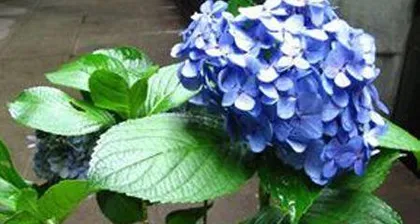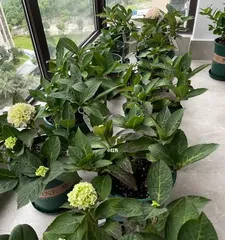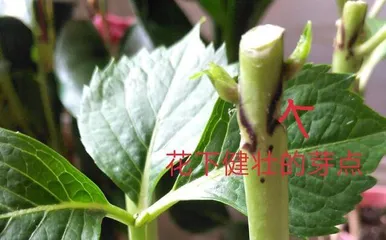Hydrangeas are beautiful garden plants, but during the care process, the correct watering method is crucial. This article will detail how to properly water and care for hydrangeas.

Understanding Hydrangea's Watering Needs
Hydrangeas are drought-tolerant plants, but they also need sufficient water to grow healthily. It is very important to understand the watering needs of hydrangeas.
Mastering the Best Time to Water
Morning or evening is the best time to water, as this avoids direct sunlight and evaporation, which is beneficial for the hydrangea to absorb sufficient water.

Considering Climate and Seasons
In hot summer weather, hydrangeas need to be watered more frequently. In cooler winter, watering should be reduced.
Using Suitable Watering Tools
Suitable watering tools include spray bottles, nozzles, faucets, etc., which can water the hydrangeas evenly.
Paying Attention to Watering Methods
When watering, avoid pouring water directly on the hydrangea's flowers and leaves to prevent diseases. Water should be slowly poured into the flower pot from the base, allowing the soil to absorb it gradually.

Avoid Overwatering
Overwatering can lead to overly wet roots for hydrangeas, increasing the chances of pests and diseases, so it should be avoided.
Pay Attention to Drainage
Hydrangeas need good drainage to prevent water from accumulating in the pot, which affects root health. Drainage holes can be set at the bottom of the pot to let excess water flow out.
Keep the Soil Moist
Hydrangeas need to keep the soil moist, but not too wet. You can touch the soil with your hand and water it if it feels dry.
Pay Attention to Environmental Humidity
Hydrangeas need suitable environmental humidity to grow. If the environment is dry, humidity can be increased by spraying.
Appropriate Fertilization
Appropriate fertilization can increase the nutrient supply for hydrangeas, but excessive fertilization should be avoided to prevent harm to the plant.
Pay Attention to the Flowering Period
During the flowering period of hydrangeas, special attention should be paid to the method and frequency of watering to ensure the hydrangeas can fully absorb water.
Regularly Clean the Flower Pot
Regularly cleaning the pot can prevent the accumulation of weeds, fallen leaves, and other substances inside, which affects the growth of hydrangeas.
Maintain Air Circulation
Maintaining air circulation can help hydrangeas exhaust waste gas and moisture, promoting healthy growth.
Prevent Sun Exposure
Avoid exposing hydrangeas to strong sunlight for long periods. Protection methods such as using a sunshade can be employed.
The correct watering method is a crucial and indispensable part of hydrangea care. By understanding the watering needs of hydrangeas, mastering the best watering times, using suitable watering tools, and paying attention to drainage, you can effectively care for hydrangeas, allowing them to grow healthily and bloom beautifully.